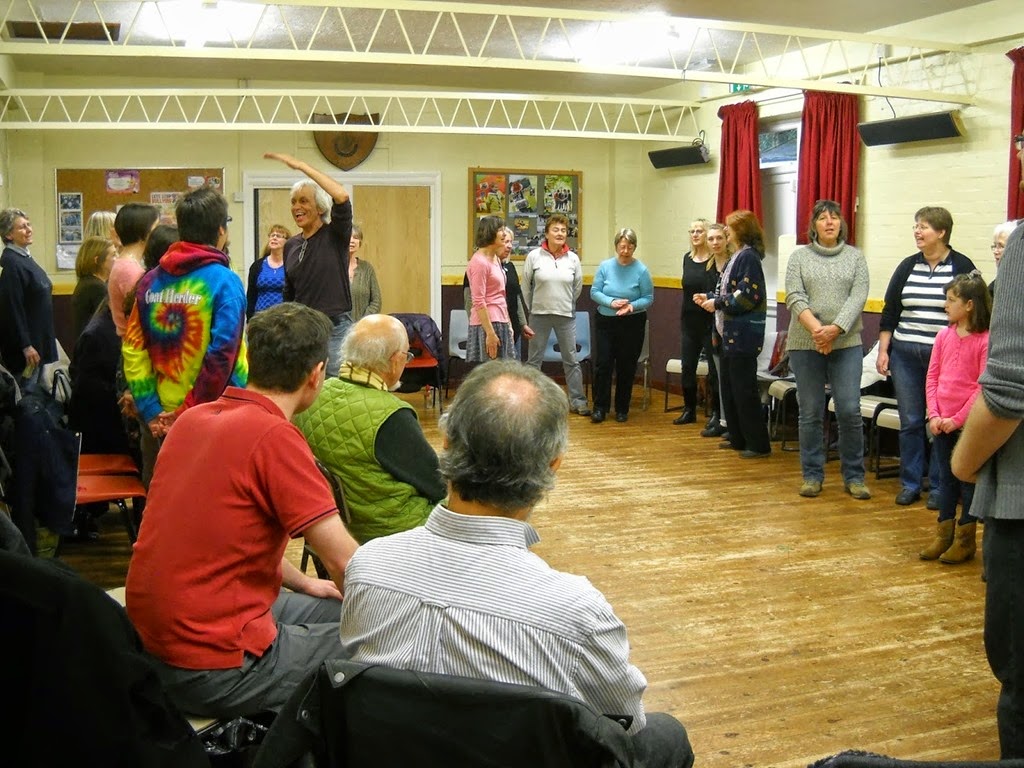[A version of this article first appeared as a post on my blog From the Front of the Choir]
Some people run ‘drop-in’ singing sessions. People can drop in on any session they want, there is no commitment and no signing up for a ‘season’.

It’s a nice idea: no commitment, no pressure, all very fun, sociable and informal. But there are plenty of good reasons why groups like this are hard to sustain.
Most choirs and singing groups:
- meet on a regular basis (usually weekly);
- have a rehearsal of between one and two hours;
- have a core of members who attend for many years;
- run in blocks of sessions (called ‘seasons’ or ‘terms’);
- ask singers to commit to a season at a time (often by asking for payment in advance);
- have a public performance at the end of a season.
But there are also ‘drop-in’ groups where singers can attend as many or as few sessions as they like. These groups:
- usually meet on a regular basis (weekly or monthly);
- have sessions of between one and two hours;
- have singers who attend irregularly for a few months, then drop out;
- tend not to bunch sessions into seasons;
- do not ask singers to commit themselves to a given number of sessions (people pay when they attend a session);
- seldom have any kind of public performance.
As far as the leader of a drop-in group is concerned, there are many challenges not encountered in a regular choir. Here are ten of them.
- different singers each time – hard to create a cohesive group and for singers to get used to singing with each other (see also It’s summer – where have all the choir gone??!!).
- no on-going development – hard to build on vocal technique and ensemble training from session to session. This leads to always teaching to the lowest level of experience in the room. Nobody benefits.
- new songs every time – you can’t assume that those singers who came last time will be there the next time so it’s easiest to teach brand new songs each session.
- can’t do complex material – the songs you teach can’t be too long or complex as they need to fit into a self-contained session.
- no idea which voice parts are going to turn up – hard to decide which arrangements to do if, for example, no tenors come to a particular session or it’s all sopranos.
- lack of commitment can affect attendance – if a singer is committed to a group (like a choir) then they have a sense of allegiance to their fellow singers and might overcome a slight cold or a rainy night to attend. But in a drop-in group there is no such allegiance and if a sunny day beckons it might mean that singers decide to stay in their garden instead.
- easy to forget when sessions are – some groups meet every fortnight or the second Saturday of each month. It’s very easy to lose track of when the next session is.
- fluctuating income – for the person leading, there is no way of knowing what their income will be for any given session, so hard to plan and budget.
- hard to work towards performance – if the drop-in group decide that they would like to perform, then it’s difficult to organise sufficient rehearsals where everyone can attend.
- other demands on people’s time – many drop-in groups meet on weekends, unlike most choirs which are on a weekday night. Weekends are when there are most demands on people’s time.
It’s not impossible to overcome these obstacles, and there are some successful drop-in groups out there (do let me know if you are in one!). But it can be much harder, more frustrating and limiting to run one of these groups than a regular choir.
To get more posts like this delivered straight to your inbox,
click to subscribe by email.
Chris Rowbury
website: chrisrowbury.com
blog: blog.chrisrowbury.com
Facebook: Facebook.com/ChrisRowbury
Twitter: Twitter.com/ChrisRowbury
Monthly Music Roundup: Tinyletter.com/ChrisRowbury
